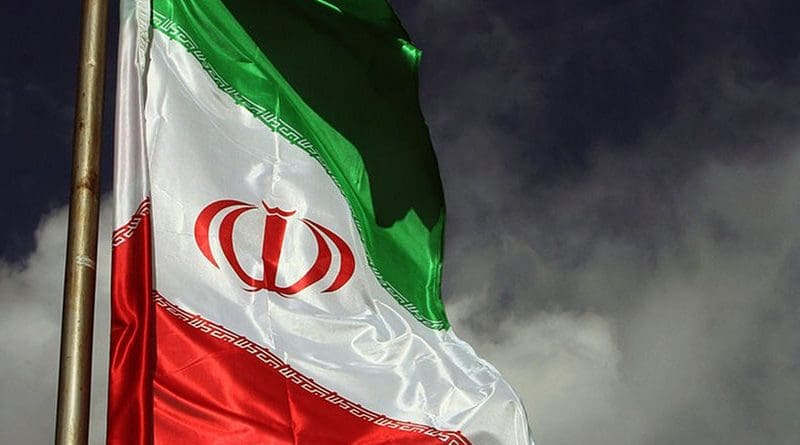Iran’s Nuclear Deal And Effect On China And India – OpEd
By Iran Review
By Diako Hosseini*
The revocation of economic sanctions following the recent nuclear agreement between Iran and the P5+1 group of countries has opened new horizons for the prosperity of trade exchanges between Iran and other countries of the world. Although Iran and European companies have shown immediate enthusiasm to resume new economic partnership, from the viewpoint of Iranians, the nuclear deal has also provided a good ground for the strengthening of economic and political relations between Iran and Asia. In the meantime, many Iranians have been symbolically referring to the reemergence of Asia, the ancient golden times, and the prominence of major Asian power such as China, India and Iran. However, it would be a mistake to think that this issue is merely the result of a nostalgic interest.
“Looking to the East” is supported by a strategic logic as well, and for this reason, it is considered an attractive and balancing strategy with respect to Iran’s relations with the West. Based on this view, Iran cannot complete its foreign relations without due care for its geographical position, such as being located in Eurasia supercontinent and its proximity to the Indian Ocean. During past centuries, Iran has been rarely able to take advantage of these geographical features in its own favor, just for the simple reason that most of the time the country has been lacking a powerful navy to defend itself and to use it for trade purposes. At the beginning of the 16th century AD, Europeans invaded Iran’s southern coasts for the first time and since that time the Persian Gulf coasts have never been free from presence of a foreign power that would be a potential threat to Iran.
In addition, the concentration of global policies on Eurasian lands and Iran’s neighborhood with such land powers as the Russian Empire and the Ottoman Empire, respectively on the north and west, deflected a large part of Iran’s strategic focus from southern seas toward Eurasian lands. Today, however, the world has undergone huge changes of which Iran is well aware. Due to demographic changes in the world, now about 75 percent of the world’s population live at a distance of 200 miles from the sea and as put by Robert Kaplan, “… the world’s military future may well be dominated by naval (and air) forces operating over vast regions.”
In line with this new global geostrategy, Iran is eager to find a new position for itself. The emergence of Asia, topped by China and India, would be accompanied with increasing dependence of these countries on the oil that is exported via the Persian Gulf. The rivalry between India and China to get access to energy fields in the Persian Gulf and guarantee free flow of energy from this Asian region, has redefined Iran’s geopolitical situation in a new and unprecedented way. Iran is willing to play its role as a responsible and stabilizing power in Asia’s energy hub and not only expects the emergence of Asia to provide it with the opportunity that the country historically deserves, but also expects the Asian powers, unlike the West, to support such a role in their strategic cooperation with Iran.
Perhaps this expectation would seem to be too optimistic, but it is an indispensable part of the philosophy of the “looking to the East” approach among political elites in Tehran. There are three cooperation spheres between Iran, on the one hand, and China and India, on the other hand, in medium term. Resumption of Iran’s oil and gas exports to China and India, which have been on the fall since 2009; attraction of foreign investment in Iran’s energy infrastructure, road and railroad construction, and/or more extensively in all industrial infrastructure of Iran; and finally strategic cooperation among three sides of Iran, China and India triangle within the Shanghai Cooperation Organization, which presages emergence of a new global geostrategy, are major fields in which the three countries can get closer. Without being overwhelmed by extreme optimism, Iran hopes that the nuclear deal would pave the way for testing the “look to the East” strategy. This was the same message that Iran sent to the world during Iranian Foreign Minister Mohammad Javad Zarif’s recent visit to New Delhi on August 14.
*Diako Hosseini, Researcher, Iranian Institute for European and American Studies (Iran- EURICA)


This article sounds exceedingly positive, but it does not seem to me
to line up with the hard fact that Iranian energy will now be available to a world suffering from such an oil glut that it is impossible to recover even half the cost of getting the stuff out of the ground in the first place.
Since the intention of the United States at the present moment is to rid itself of Russia and Russian geopolitical influence and to drive Russian oil supplies to such low prices that Russia will go bankrupt–a policy that is driving Russia into the arms of China–one is forced to wonder where Iranian oil is going to fit into this
picture.
Then there is the upcoming competition to exploit the oil resources of the Arctic–where the United States and Russia will go head to head. The P5 + 1 agreement with Iran was really never about an Iranian weapons program, which was always a red herring. So I am forced to wonder what has been the real motive for this sudden reversal of the US’s long-standing hatred of Iran?